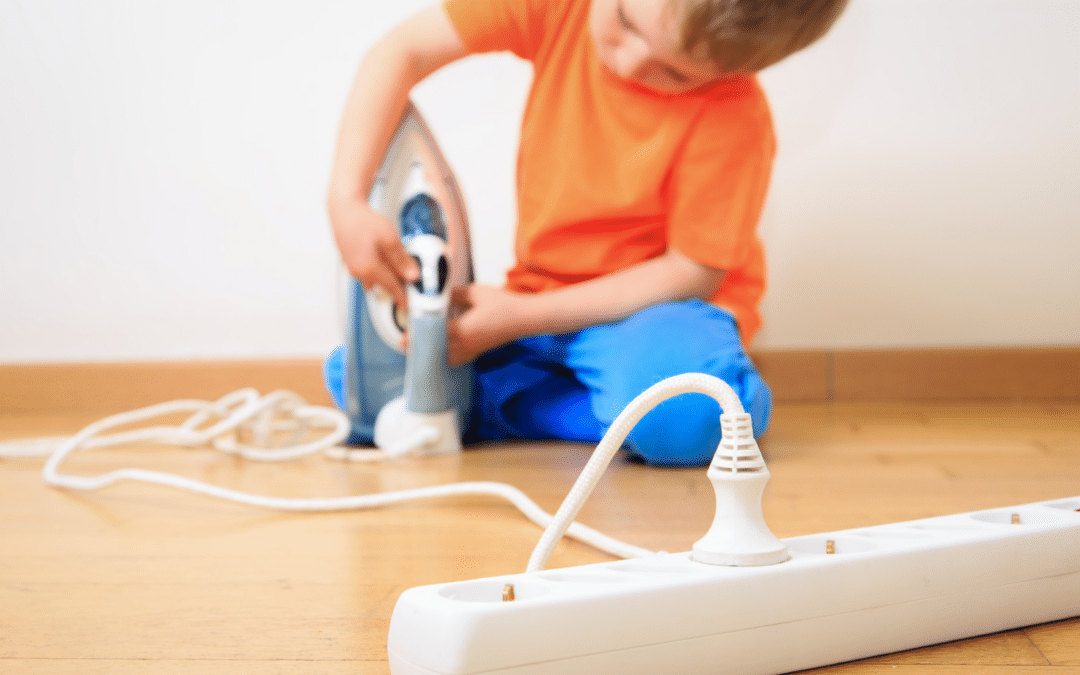Key Takeaways
- Unprotected electrical outlets pose a significant danger to children, making childproofing a top priority in any home.
- Modern outlet covers, plugs, and strategic placement can dramatically cut risks.
- Practical tips for DIY installation and regular checks can ensure effectiveness as children grow.
- Electrical system upgrades provide advanced protection and peace of mind, especially in older homes.
- Educational approaches and staying updated with reliable resources are essential to long-term home safety.
Why Childproof Electrical Outlets?
Electrical outlets, often a source of fascination for children, can pose a safety risk due to their proximity to the ground. The Consumer Product Safety Commission reports that thousands of children are injured due to burns, shocks, and injuries from electrical outlets each year. Therefore, prevention should be a priority for families, as supervision alone may not always suffice during these critical first years. That’s where a reliable approach plays a considerable role, like an expert how to childproof electrical outlets. Barriers and safeguards add an essential layer of defense, lowering the odds of any mishap. Installing the right childproofing tools ensures children can freely explore and play, while granting parents crucial peace of mind that exploration comes without accidents waiting around every corner.
Common Types of Outlet Covers and Plugs
Today’s marketplace offers a variety of products specifically designed to block or deter access to outlets. Start with simple plastic plug covers—these inexpensive inserts fit directly into exposed outlets and are widely available at hardware stores and online. Their clear benefit is affordability, making it possible to cover every outlet in the home with minimal investment. Still, these covers can sometimes be pried out for particularly persistent or dexterous kids, so checking them frequently is key. Sliding plate covers have been rising in popularity. Designed with a spring-loaded shutter, they only reveal the electrical prongs when a plug is being inserted. They’re slightly more of an upfront investment and require installation, but their tamper-resistance provides ongoing safety without needing constant attention. Box-style outlet covers are the most secure choice for areas where power strips stay plugged in, such as entertainment centers or home offices. These transparent or semi-opaque boxes fully enclose the plugs and wiring, blocking access to multiple sockets simultaneously, even for the most determined toddlers. Most families will find that a combination approach works best. Frequently accessed sockets can use sliding plate covers, while infrequently used or hidden outlets get plug covers. Think about each room and its unique setup—for instance, nurseries benefit from wall-mounted covers, while kitchens may need boxes to protect active counter outlet strips. The range of options empowers families to seamlessly fit safety solutions into their daily lifestyles.
Installation Tips for Parents and Caregivers
Even the most advanced outlet covers will falter if not installed correctly. With that in mind, choosing products with clear instructions and ensuring a snug, secure fitting is essential. To install plug-in covers, insert them as you would a standard electrical plug, pressing firmly until flush with the outlet cover. Give a gentle pull—if they come out easily, consider alternatives or double-check for the correct size. Sliding plate covers replace your existing outlet plate altogether. Using a flathead screwdriver, unscrew the old plate, align the new sliding plate over the outlet, and screw it in tightly. Test by trying to insert a plug and making sure the spring mechanism covers the holes when not in use. For box covers, follow the manufacturer’s directions closely—enclosing all cords and plugs, latching the cover, and ensuring there is no way for a child to lift or slide it open. Be cautious with power strips; overstuffing can create new hazards such as overheating, so ensure some airflow and avoid stacking multiple adapters. After installation, set a calendar reminder to check all covers every few weeks. Watch how your child interacts with the covers—if they seem curious, double down with more advanced models or rearrange furniture for added deterrence. A little diligence on your part keeps these safety measures effective over time.
DIY Childproofing Hacks That Work
Sometimes, parents need solutions on short notice or between shopping trips, and that’s when creative DIY hacks can momentarily fill the gap. Painter’s tape—a staple in many homes—can hold plug covers more firmly in place or act as a visual “stop” sign for curious fingers. Covering outlets rarely used with painter’s tape (and reinforcing them with a note or bright sticker) can remind adults and kids to steer clear. Placing heavy furniture like a bookcase, dresser, or full-length mirror in front of unused outlets in living rooms or bedrooms adds another barrier. Cables for floor lamps can be tucked behind furnishings and secured with Velcro or cable ties, minimizing the temptation. Still, these DIY methods are temporary and should not replace certified safety products for high-traffic or high-risk areas. Check taped outlets regularly, as adhesive breaks down with temperature fluctuations or humidity, especially in bathrooms or kitchens. DIY hacks are best combined with commercial-grade safety solutions, not as substitutes. They offer flexibility and can buy you precious time, but long-term upgrades are irreplaceable regarding real prevention.
When to Update Your Electrical Systems
For families living in older homes, unsafe wiring or outdated outlets can undermine the value of even the best childproofing products. Loose outlets that can’t secure a plug, crackle with sparks, or fail to hold a modern three-prong plug all signal deeper issues. As children age or if a family expects new additions, conducting a thorough inspection is wise. Modern code requires tamper-resistant (TR) outlets in new construction. These outlets have internal shutters that keep foreign objects out even if children poke them with keys, pencils, or toys. Retrofitting your home with TR outlets or rewiring outdated sections is an investment that adds value and safety. Electricians recommend considering upgrades anytime you renovate, purchase a new home, or notice persistent electrical issues like tripped breakers, flickering lights, or scorching smells. Powerful upgrades such as GFCI circuits in kitchens, bathrooms, and garages provide shock protection, especially around water. Preventive maintenance—including replacing worn cords, updating outlets, and considering smart home integrations—can considerably decrease your household’s risks and save you money on insurance over time.
Teaching Kids About Electricity Safety
While physical barriers are vital, education empowers children with lifelong knowledge. Introducing children, even at a young age, to principles of safety develops mindfulness and helps reinforce boundaries. Simple rules like “never touch outlets” or “ask before plugging in” are effective, but so are positive conversations that help children understand why these items are dangerous. Consider using games, picture books, or video resources to make lessons more memorable. Organizations such as Safe Kids Worldwide provide engaging and age-appropriate materials for families looking to supplement their efforts. Children love to model adult behavior, so take the opportunity to show them how grown-ups handle electricity safely: drying hands before plugging things in, pulling cords gently, and keeping liquids far from sockets. Create rituals around safety checks, making them part of your family routine, so kids grow up alert to potential risks.
Additional Home Safety Measures
Childproof outlets cover only a portion of overall household safety. Loose cords, overloaded power strips, and exposed wiring are additional daily hazards. Use cord wraps to keep extra lengths off the floor, and consider using cord covers in areas where cables run along walkways. Install childproof locks or covers for high-power appliances, and keep power strips hidden behind furniture when possible.
Don’t forget the importance of GFCI outlets in bathrooms, kitchens, laundry rooms, and garages—especially near sinks or any water sources. These outlets immediately shut off power in the event of a surge, reducing the risk of severe shocks, and are required by code in many modern homes. Setting up a safety checklist for monthly walkthroughs will ensure that slow wear-and-tear or shifting furniture doesn’t introduce new risks over time. Adopting new technology, such as smart outlets with built-in sensors, means additional peace of mind—some products even send alerts if tampered with while you’re away.
Staying Up to Date With Safety Guidelines
The best safety routines adapt over time. Recommendations evolve, products improve, and new hazards can appear as your child grows. Follow agencies like Safe Kids Worldwide and the Consumer Product Safety Commission for current best practices, product recalls, and new technology updates. They frequently publish research-backed advice and checklists you can use to customize your home’s safety plans. As experts have pointed out in recent reports, parental vigilance and clever use of modern products and updated information can keep children safe while encouraging healthy curiosity. No prevention method replaces awareness and routine; regular safety checks, education, and individual solutions to fit your family’s lifestyle will offer the best defense. Creating a kid-safe home isn’t a one-time task but an ongoing commitment to safety, awareness, and childhood exploration.








